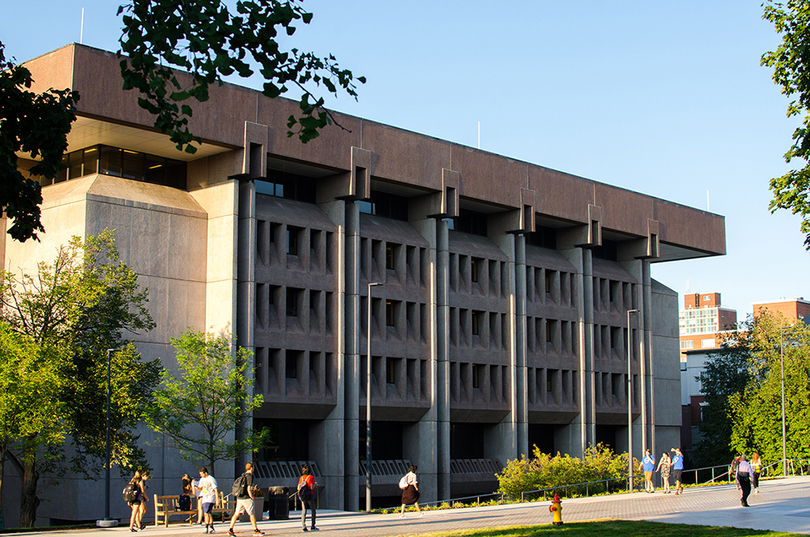LGBT Resource Center location not ideal

While it might be challenging to impact the decisions the university makes about resources for students, there’s plenty students can do on their own to create a more inclusive campus environment. Daily Orange File Photo
Up until last fall, the LGBT Resource Center was located in a house on Ostrom Avenue. Now, the center shares office space with the Disability and Cultural Center and the Office of Multicultural Affairs on the fifth floor of Bird Library.
In some ways, this represents a positive change as the center is no longer sequestered off-campus and is also more accessible for students with disabilities. But there are also multiple problems with the center’s new location, both its temporary one in Bird and its proposed future location in the Schine Student Center once renovations are complete.
Alex Middleton, a student who works at the center, said the proposed move to Schine can be problematic just as much as it could be a positive change.
“I take a little problem with the fact that they’re throwing all the minorities together, but it’s good because we’re all here and there is intersectionality,” Middleton said.
Another concern with the current location, with its cubicles and open office spaces, is that students visiting the resource center might not feel comfortable reaching out or speaking up.
Bea Fry, another student who works at the center said more students visit the center’s current office now than visited the Ostrom Avenue house, but that the Bird office doesn’t provide the privacy that the center often needs to engage effectively with students.

Courtesy of SU Archives
When the university moves the LGBT Resource Center to its permanent location, it must be visible enough that it does not isolate LGBT students and communities from the main campus, but it most also offer privacy, safety and a location that is sensitive to the needs of those it is serving.
Some students have suggested that the office relocate to the Barnes Center at the Arch, SU’s new health, wellness and recreation facility, given its focus on mental health and overall well-being.
Middleton said that the Barnes Center is a great physical location, but pointed out the damaging implications of housing resources for LGBT students there.
“If we were in the Barnes Center, it’d probably be more accessible, but also it stigmatizes queerness in a way that you’d think it was like a medical condition.”
– Alex Middleton, Student Worker LGBTQ+ Resource Center
Fry agreed, and said it would be uncomfortable given the history between the LGBT community and medicine, referring to the AIDS epidemic.
One of the most essential components of creating an accepting and inclusive campus environment is actively listening to students. University bureaucracy can often go above the heads of students, and actively involving them in decision-making processes combats biases ingrained in systems with long histories of privilege and power imbalances.
While it might be challenging to impact the decisions the university makes about resources for students, there’s plenty students can do on their own to create a more inclusive campus environment. Student organizations and clubs can collaborate with the resource center. They can attend some of the events hosted by the center.
“We want to get our voice out there, and we can only do that if other people on campus are involving us in the campus community,” Fry said. “Go to their events. Post about it on social media when you go to the events. Talk about us. That’s the way to go.”
In order to properly support its LGBT population, Syracuse University must ensure that its LGBT Resource Center is in a place that is both centrally located and allows students to feel safe and comfortable within that space.
Mallory Stokker is a junior magazine journalism major. Her column appears bi-weekly. She can be reached at mstokker@syr.edu. She can be followed on Twitter @_malloryyrose_.




